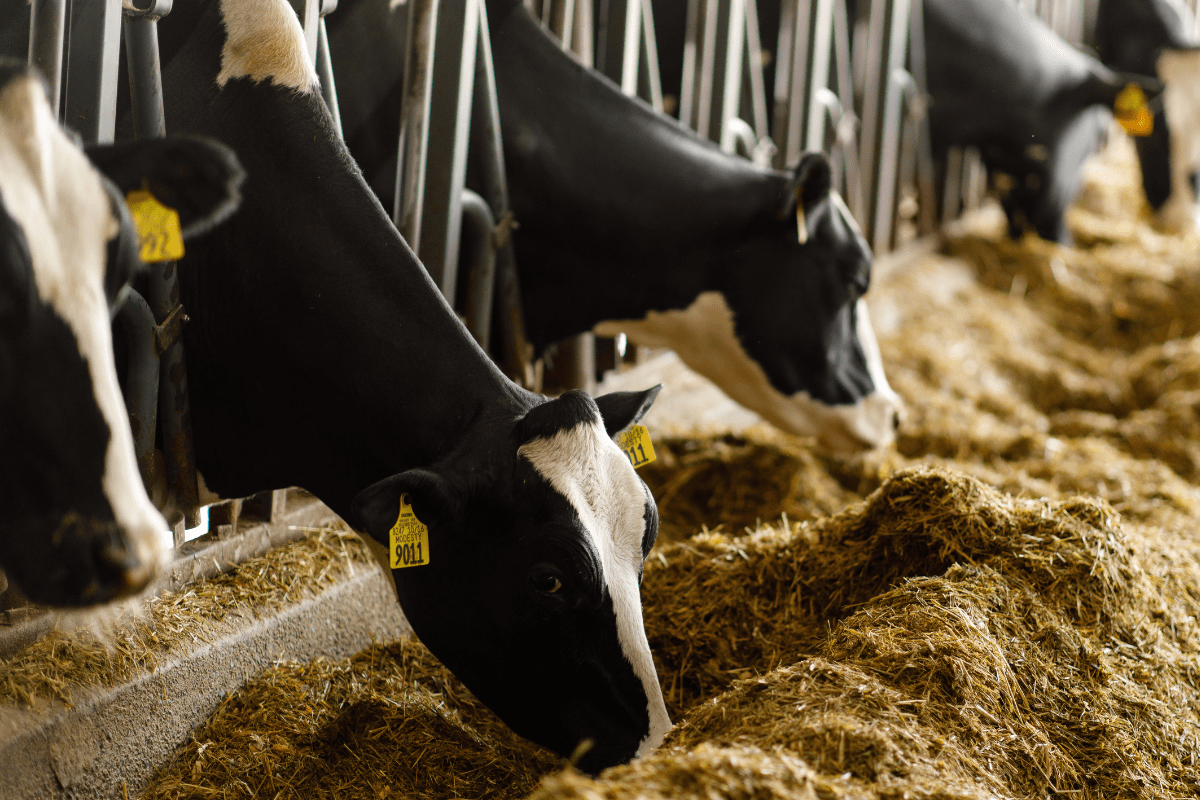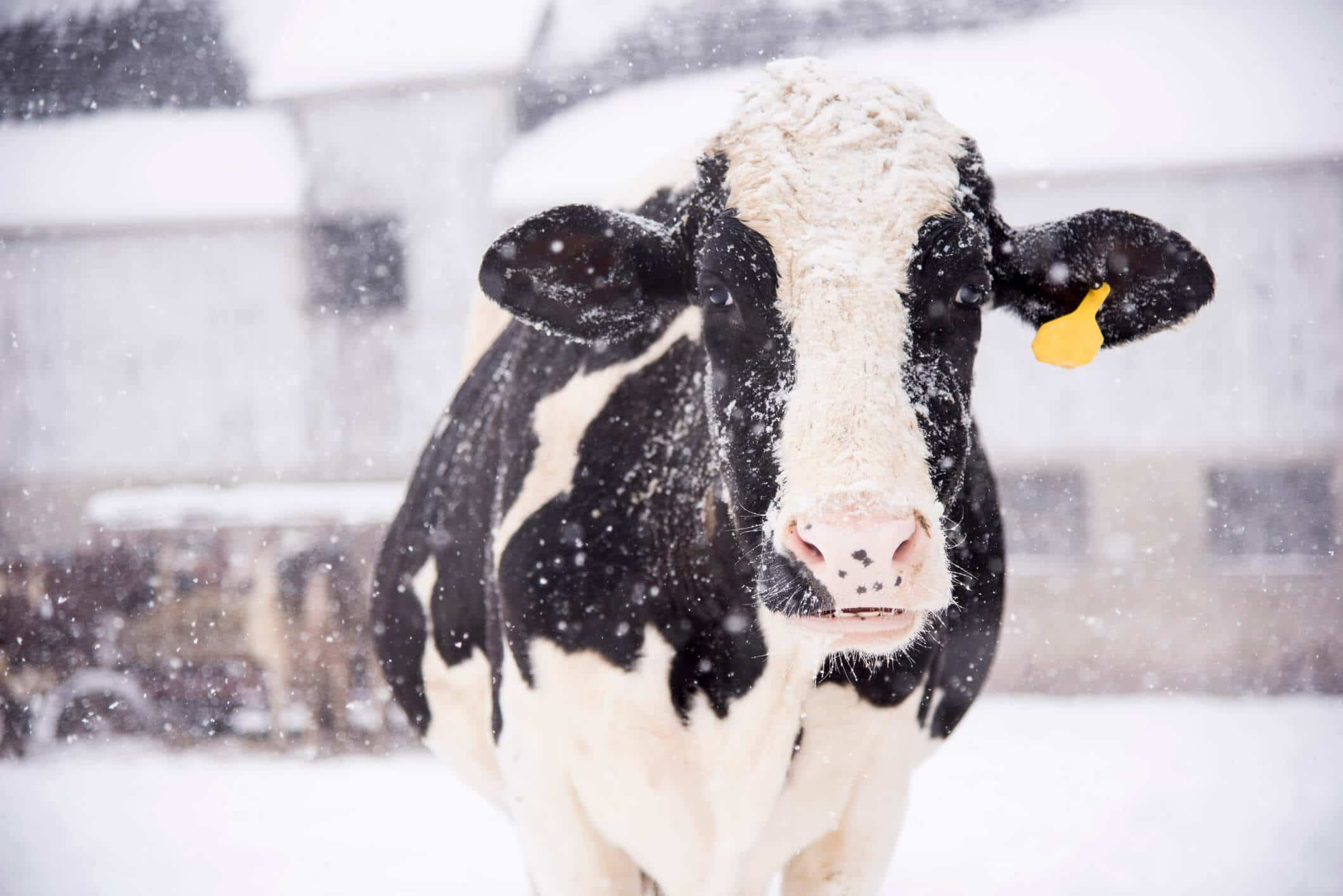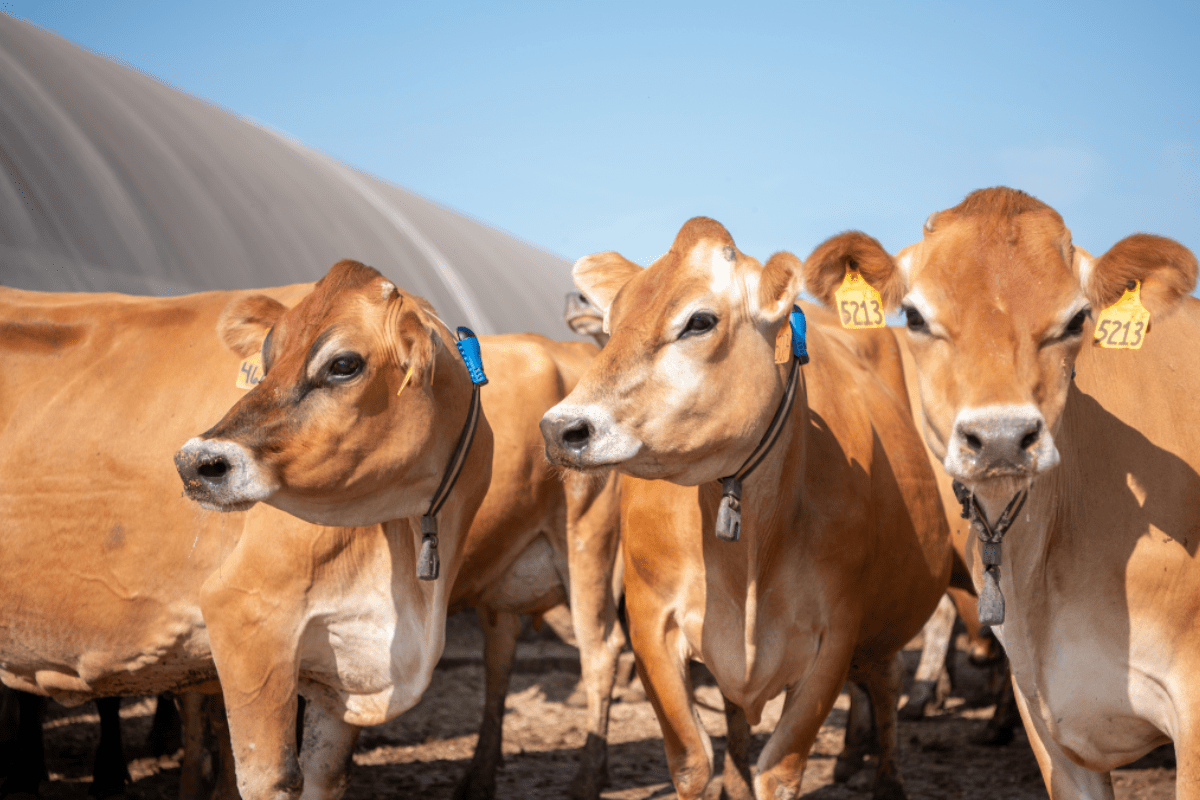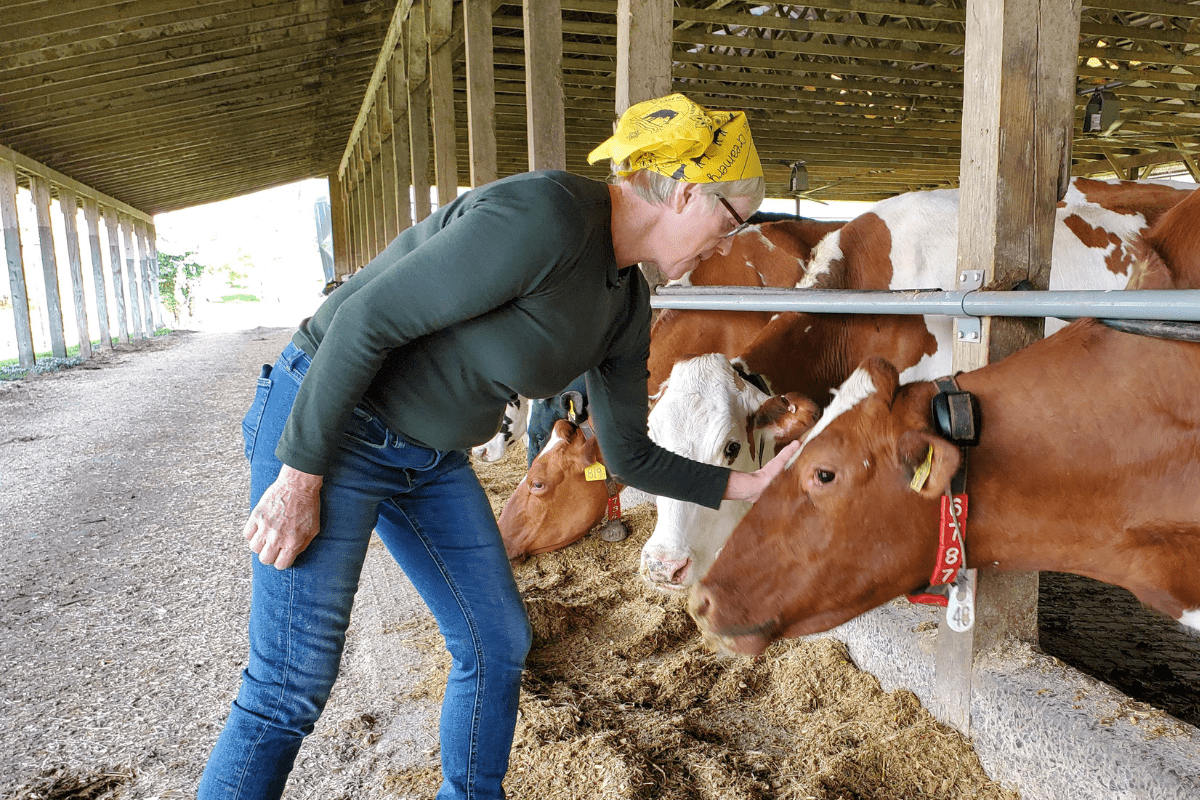Summer can be a challenging time for cows, but dairy farmers take great care to ensure their animals stay comfortable and healthy, even during the hottest months of the year. Here are seven examples of different strategies farmers use to help cows beat the heat.
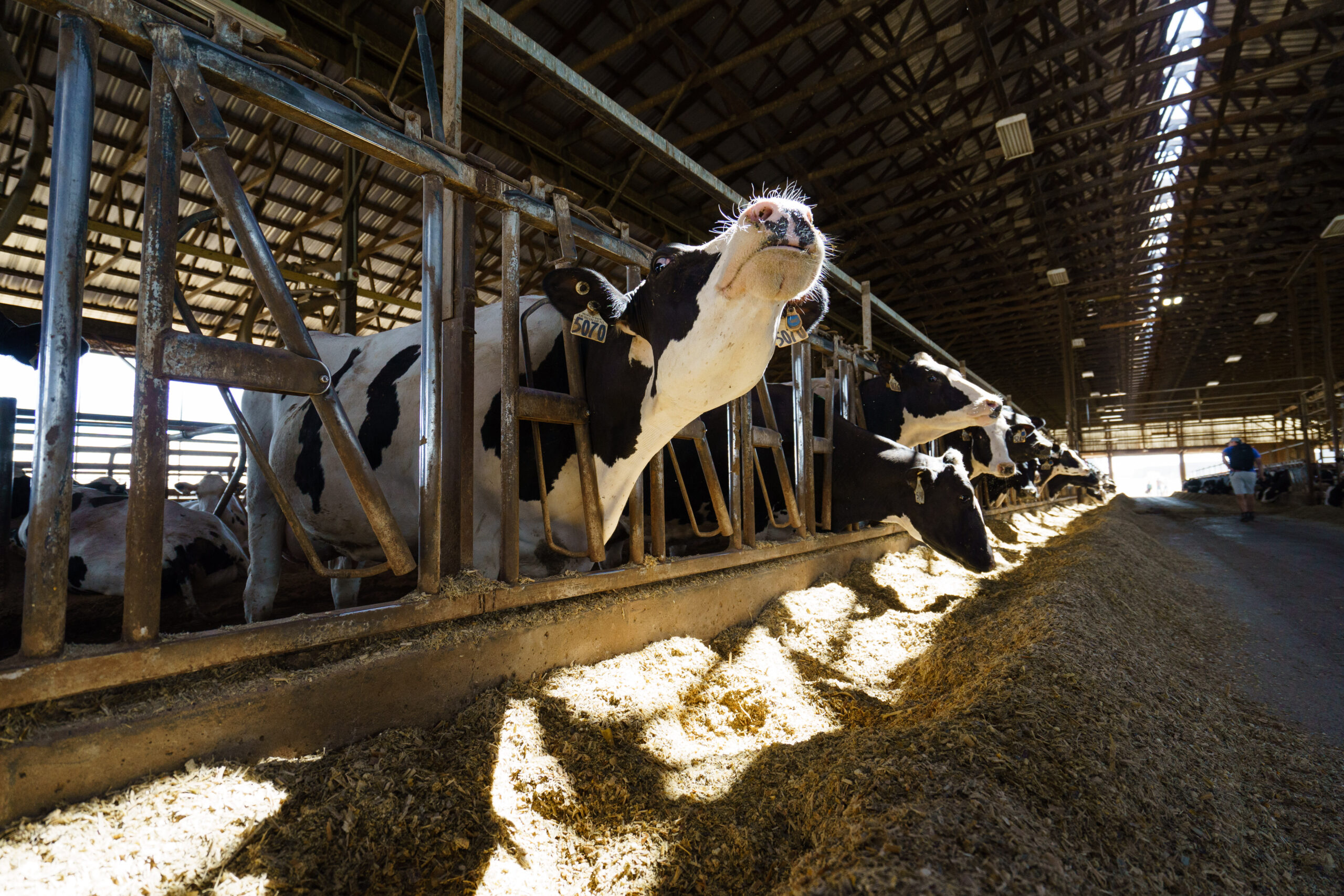
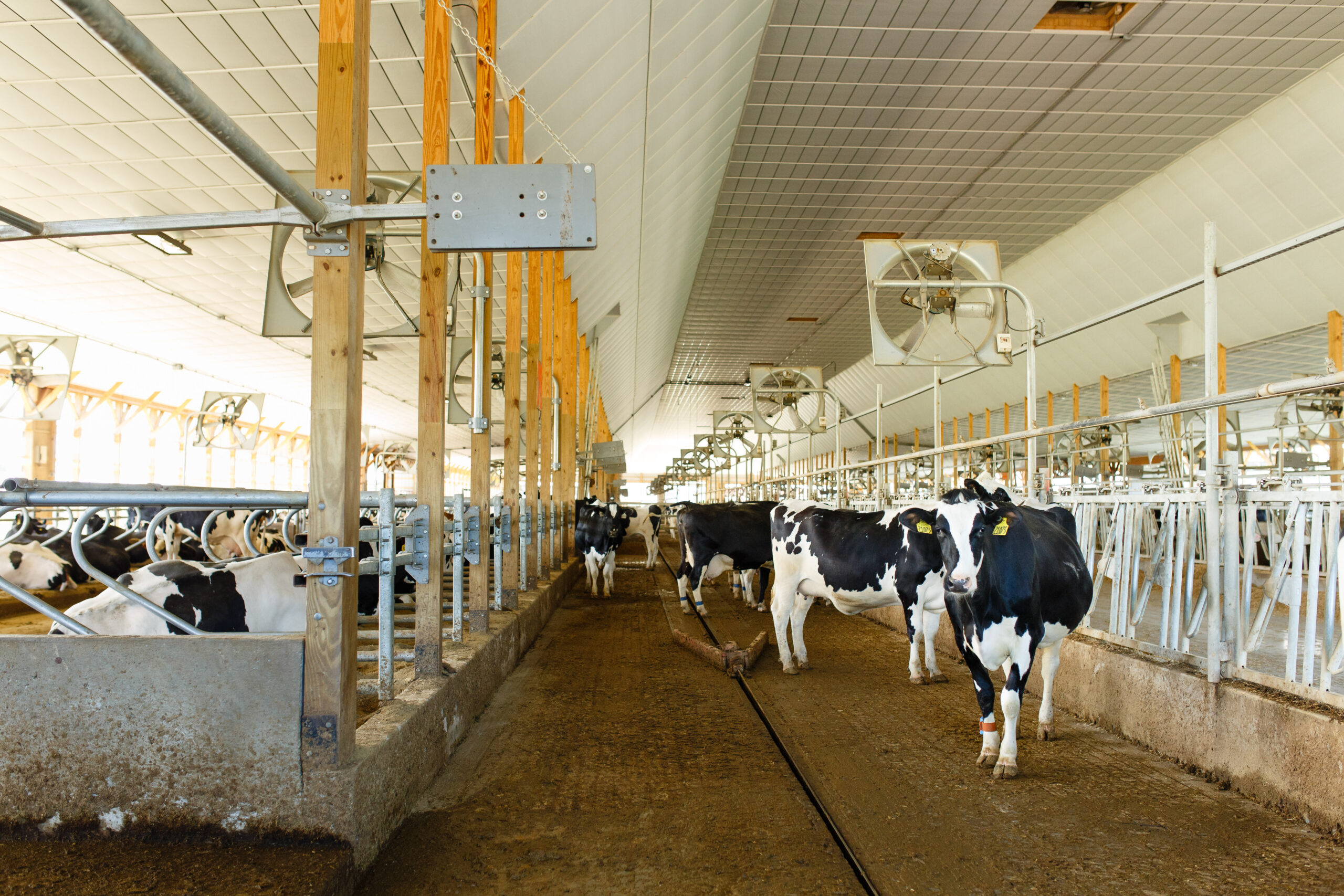
1. Shade
One of the simplest and most effective ways to keep cows cool is by providing ample shade. That’s one reason many cows are housed in barns. For cows that spend time outdoors, farmers strategically lay out their pastures to utilize the natural shade from trees. These measures give cows a place to get out of the sun and reduce their risk of heat stress. And if the heat of the day is just too much, some farmers let their cows out to pasture to graze in the early morning or at night when it’s cooler.
2. Fans
Dairy barns often have large propeller fans to help circulate air. These fans create a refreshing breeze, helping cows feel cooler and more comfortable. Good ventilation is key to maintaining a cool environment. Some farms use tunnel ventilation systems, where fans at one end of the barn pull air through, creating a continuous airflow.
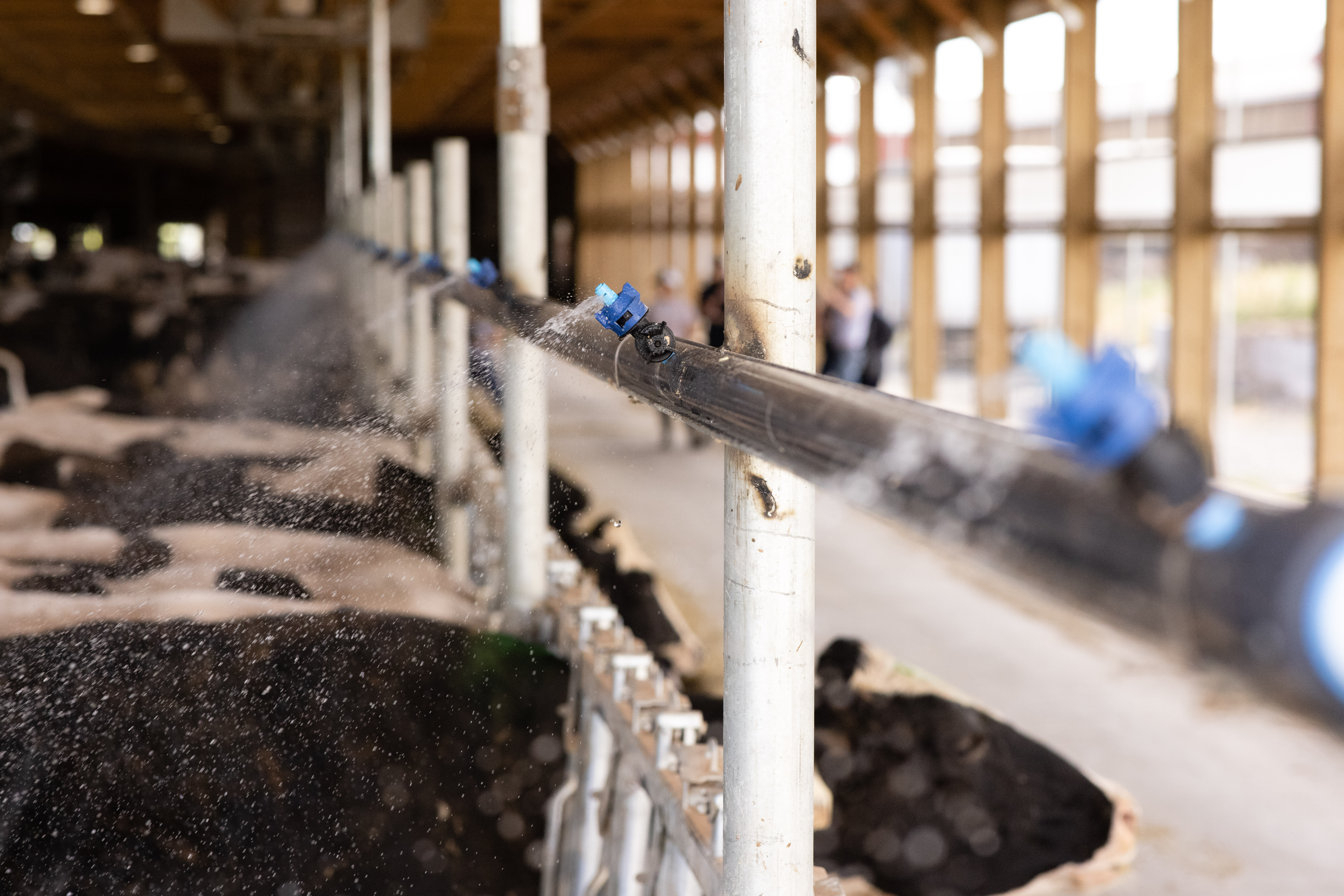
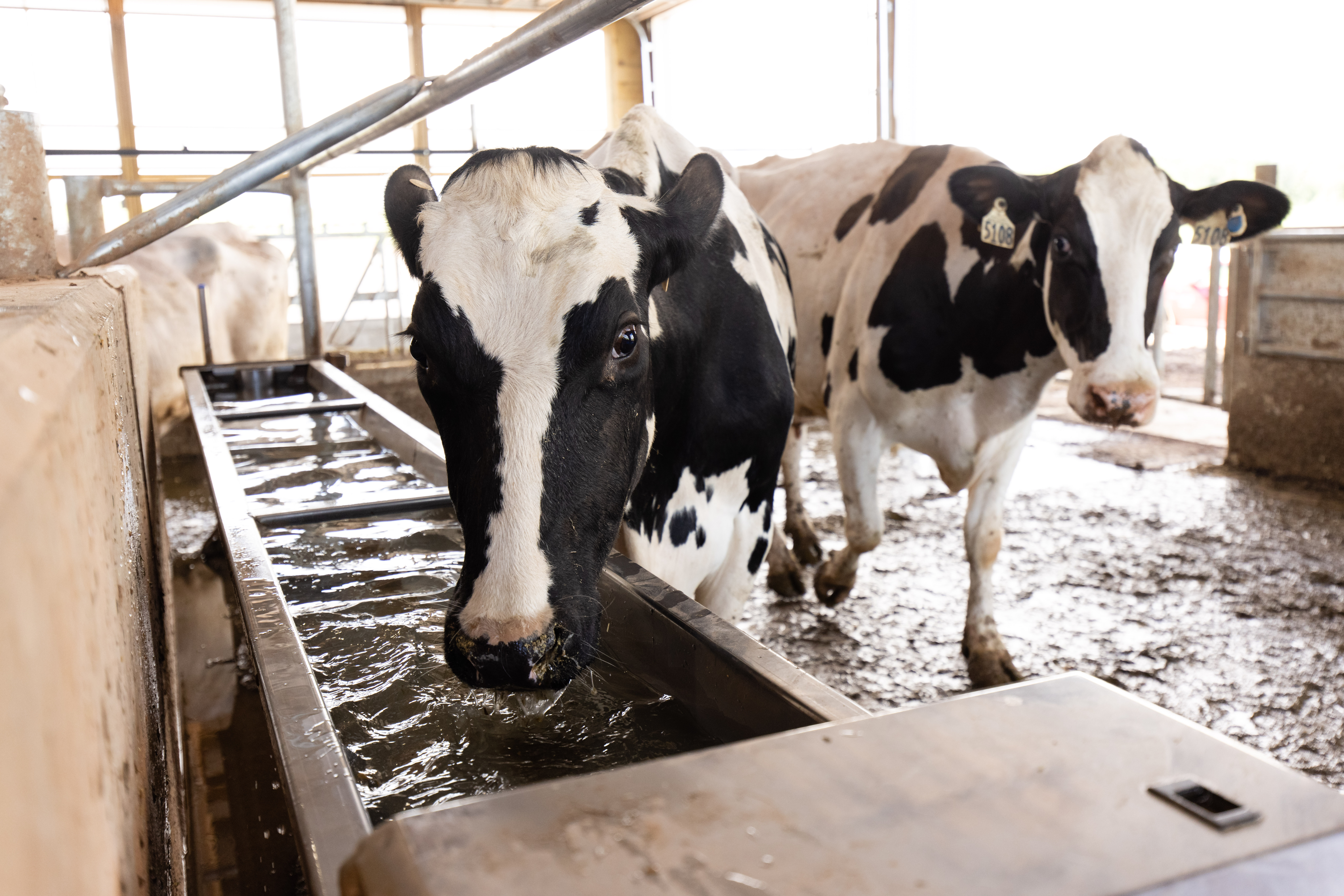
3. Misters and Sprinklers
Water is a powerful cooling agent. Some farmers use misters and sprinklers to lightly spray cows with water. Like a fire sprinkler system, the series of pipes run the length of the barn above the cows. The sprinklers disperse water across the pen, soaking a cow’s skin. Once the skin is soaked, the sprinklers are turned off to allow for the water to evaporate, which has a cooling effect. This method can significantly lower the cows’ body temperature during peak heat.
4. Plenty of Cool Drinking Water
Hydration is another key to keeping cows cool. Farmers ensure that cows always have access to fresh, cool drinking water. They regularly check water sources and may add additional water stations to encourage cows to drink more often. Staying hydrated helps cows regulate their body temperature more effectively.
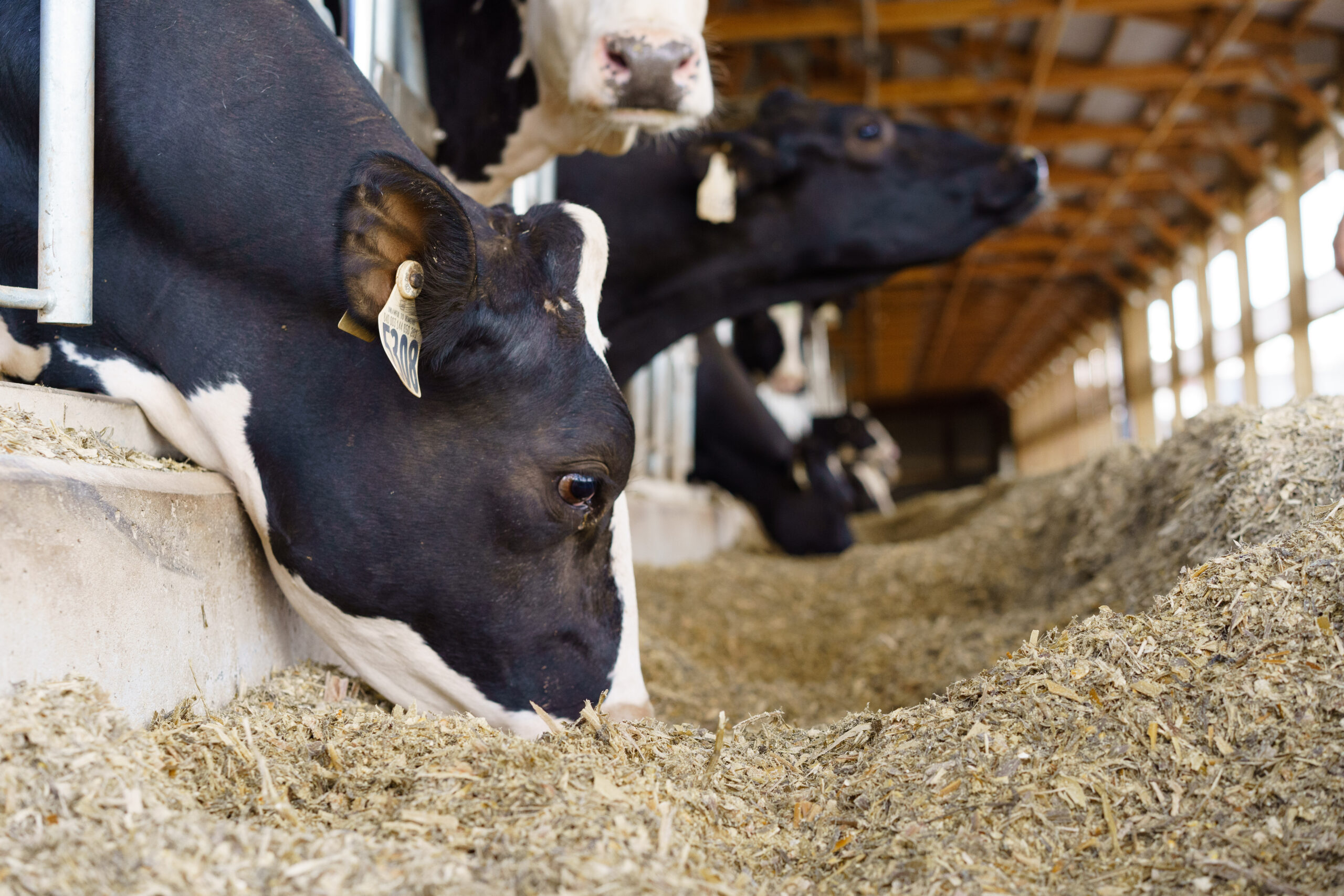
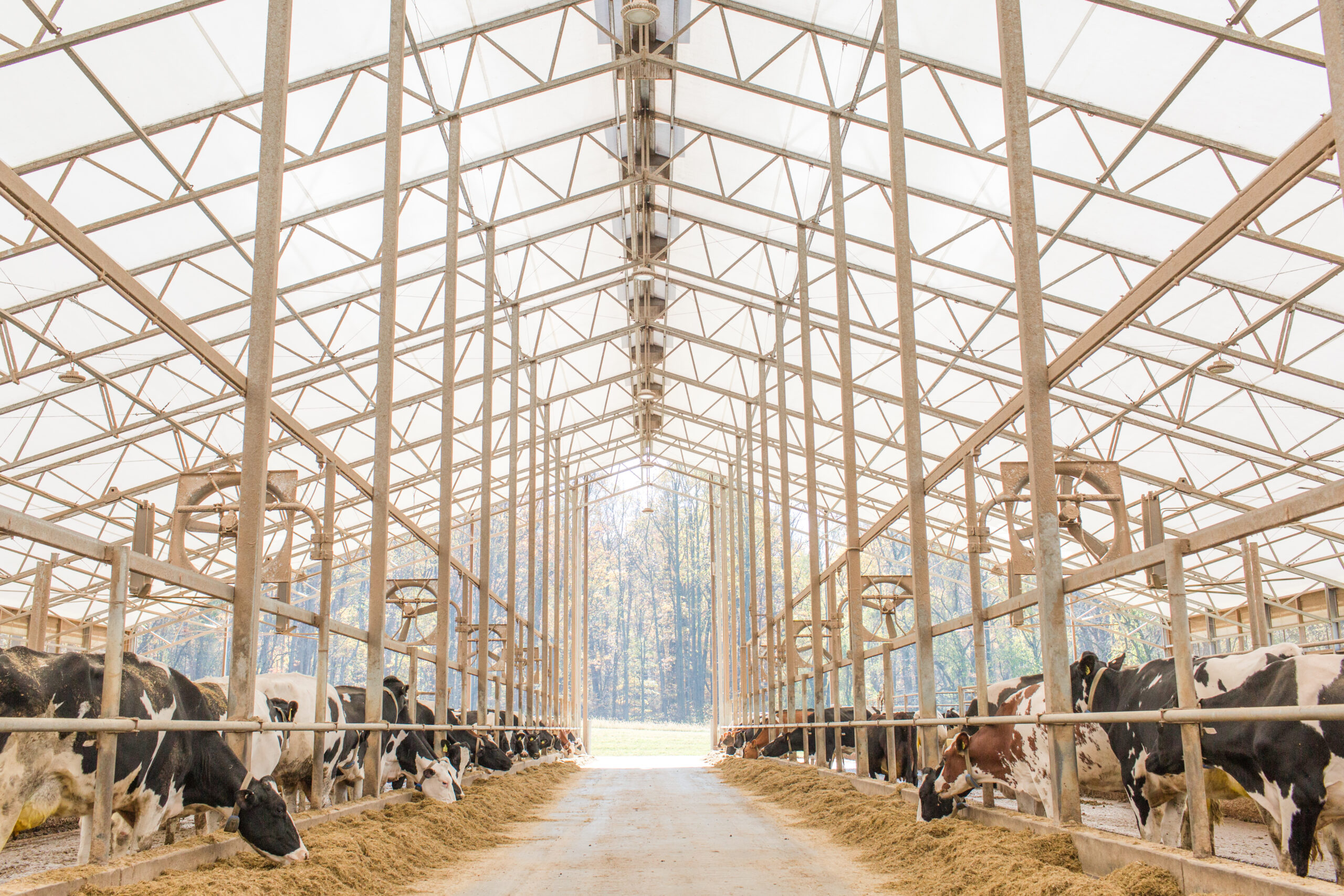
5. Feeding Times
Cows generate heat during the digestion process, so feeding times can be adjusted to cooler parts of the day. Farmers often feed cows early in the morning and later in the evening when temperatures are lower. This helps minimize the heat produced from digestion during the hottest parts of the day.
6. Airy Barns
The layout of a barn can greatly influence airflow and cooling. Farmers design barns with open sides or adjustable curtains to enhance natural ventilation. A well-designed barn layout can create a more comfortable environment for cows by promoting better air circulation and reducing heat and humidity buildup.
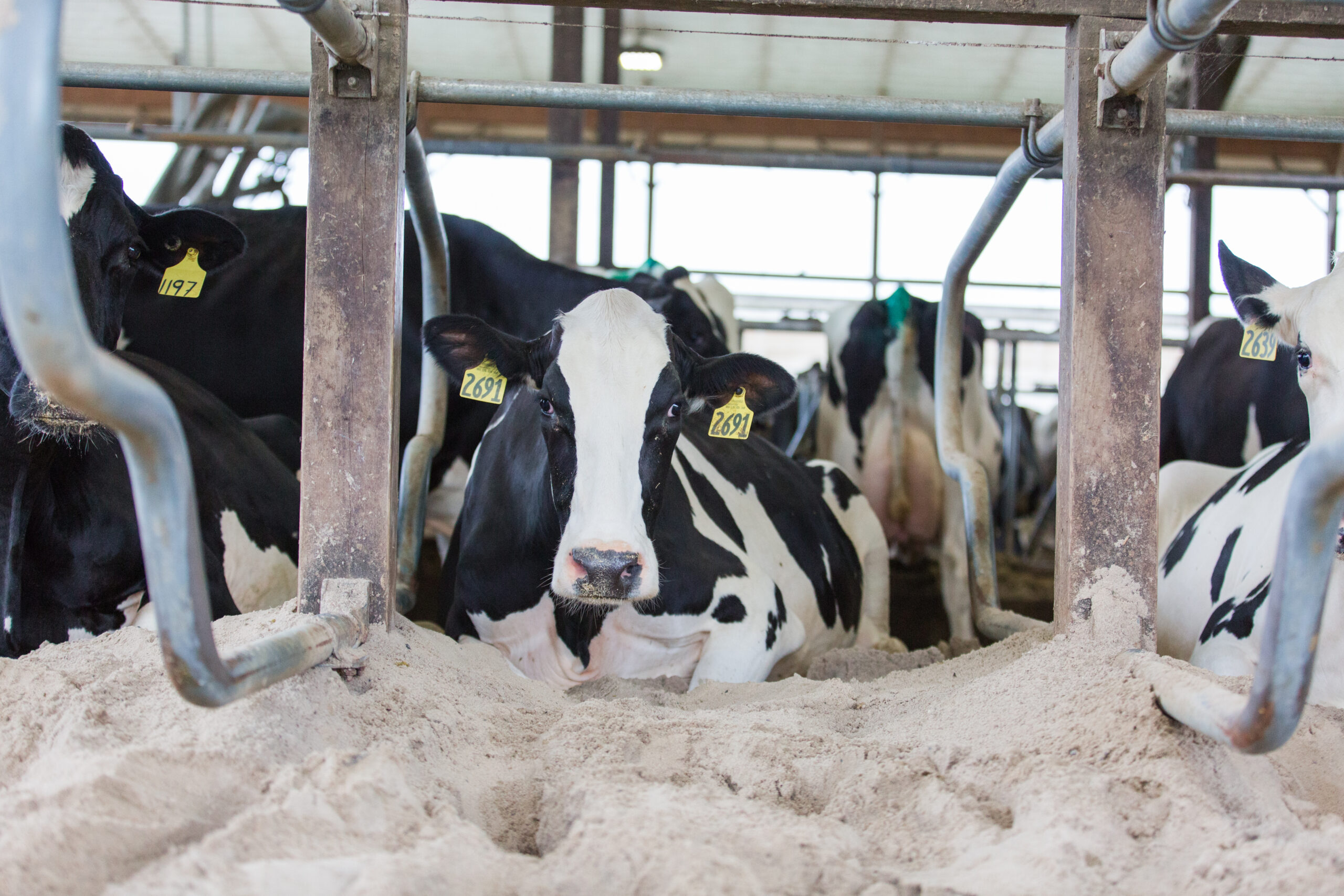
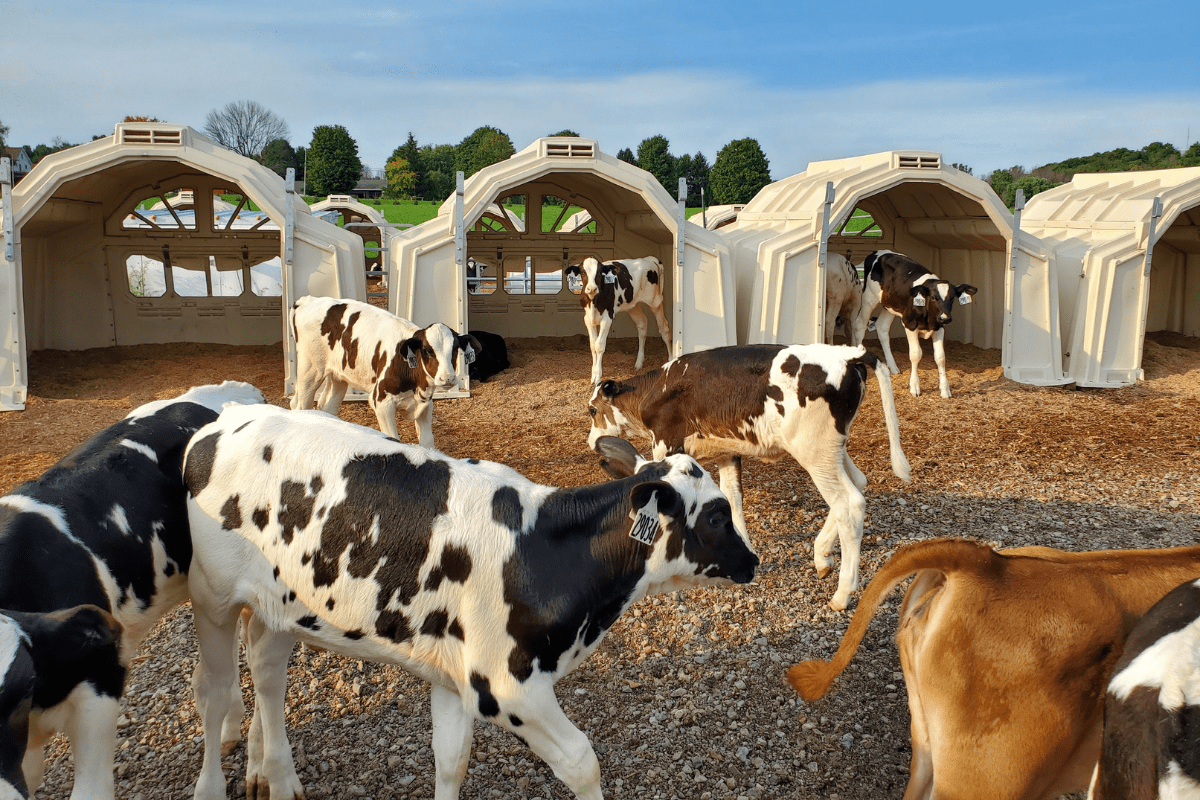
7. Cool Bedding
Some farmers use water beds or recycled sand for cow bedding. These materials provide a cool surface for cows to lie on, helping to lower their body temperature and ensuring a comfortable resting place especially during hot weather.
Special Care for Calves in the Summer
While adult cows have various ways to stay cool, calves require special attention during the summer. Calves are more vulnerable to heat stress because they have a higher surface area relative to their body weight, making them more susceptible to temperature changes. Farmers ensure calves have plenty of shade, fresh water, and well-ventilated housing. Additionally, they may provide electrolytes to help calves stay hydrated and maintain their energy levels. Proper calf care is crucial for their growth and overall health during the hot summer months.
Cow care is a priority for dairy farmers all year round as it directly affects milk quality and cow health. A variety of methods can be employed to make sure cows are content, even in the heat of summer.

